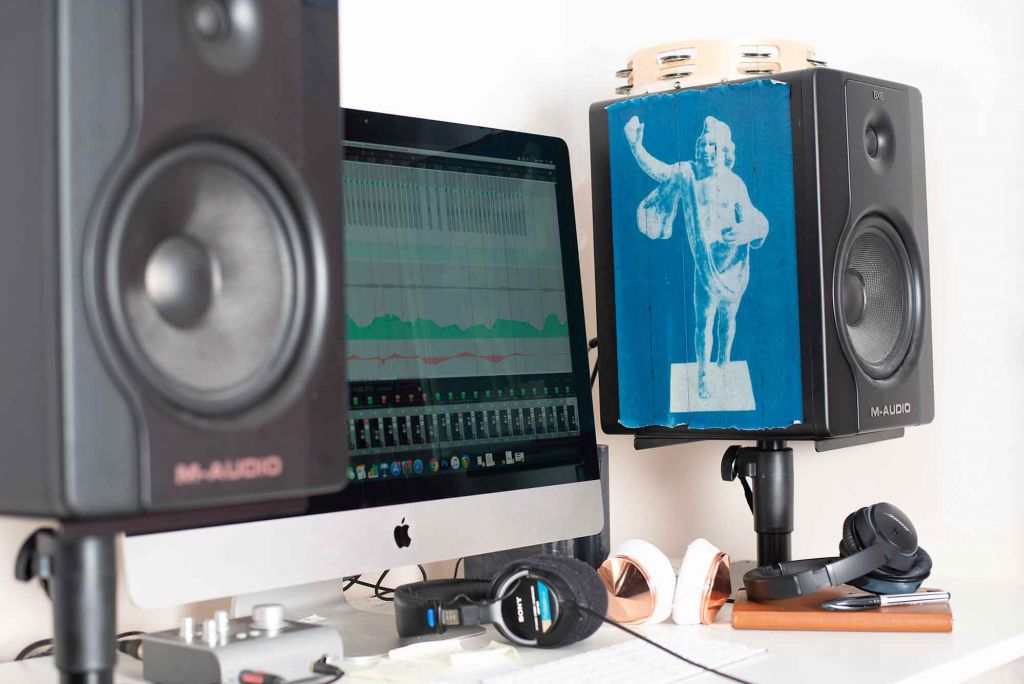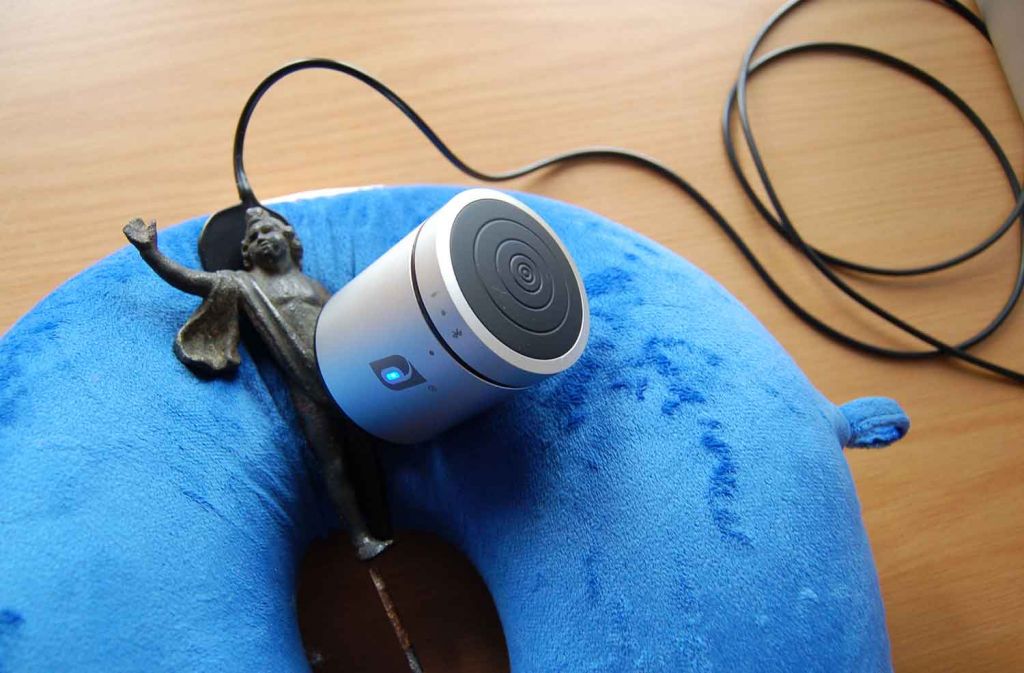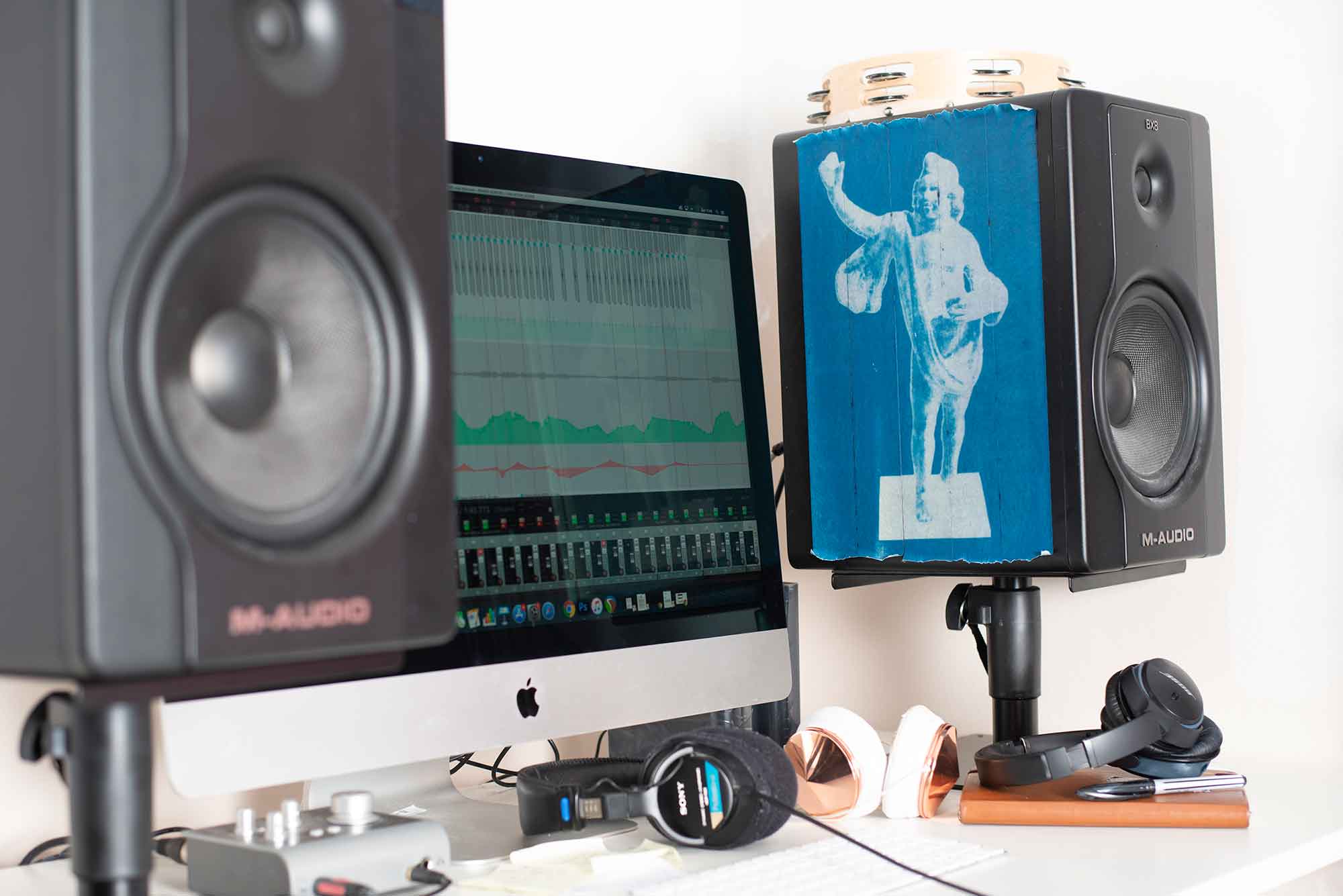Text by Giulia Ottavia Frattini

Objects from the past can turn out to be inspiring elements destined to reinterpret in the present by revealing a renewed meaning during different moments in time and guiding us as totemic presences in our daily life. Such an interest lies at the core of the Ten Songs for a Lar artistic commission.
The “Lar” is a figure, usually made of bronze, coming from ancient Rome and representing the protective spirits of the household and ancestors. According to the traditions, the “Lar” watches over the good running of the family and influences for the best the activities unfolding within the boundaries of its specific location.
These little statues were considered blessing deities and placed on tables during meals, honoured by the family members and made visible during important events. Depicted as dancing entities, the Roman poet Ovid defined [them] as Muta – the speechless one – for this reason, they appear as fascinating items revived through sound.
One of these small idols —dated from around 200AD and found in 1888 near Querry House, Frindsbury— is conserved in The Guildhall Museum, Rochester, UK. Through an open call launched by Kent Medway Museum National Portfolio Organisation Partnership (KMM NPO), they invited musicians and artists to reenact this object by proposing and realising an audio artefact around it.
After scrutinising many applications, the jury selected ten artists intending to provide a new voice to the Guildhall Lar. Within the museum materials’ incredible diversity, this object is perceived as a remnant that remained silent, under-explored throughout centuries, and still regarded as a mysterious find. The creatives chosen to enliven this enigmatic statuette are Anil Sebastian, Ariel Chan, Cyanotape, Freddie Murphy & Chiara Lee, Iain Chambers, Lunatraktors, Donna McKevitt & Jan Noble, Quiet Boy, Stergin & Louise Fazackerley, and Yeji Yeon.
The fundamental question the applicants had to answer while submitting their pieces was: ‘What does this object say to you, and what stories do you wish to give voice to and bring to life, through music and sound?’. The reactions and responses came in different languages such as modern composition, musique concrète, spoken word, field recordings, pop, folk and exploring issues regarding loss, family, home, protection, silence, time travel and even animism.

Ten Songs for a Lar is a continuation of our work to question the processes behind collecting and accessioning ‘objects’ and an opportunity to assess the multi-layered and sometimes contradictory stories that these objects may tell or arouse. Luke Currall, the Creative Director, says.
And while explaining from where the idea of Ten Songs for a Lar arose, he adds: We also wanted to give artists the chance to give voice to our silent museum objects, take ownership and share the stories that resonated with them, and exhibit the potential that music and sound play in enriching our understanding of history and heritage. We actively encouraged subjective, emotive responses in an attempt to tap into concepts of object agency. How can objects be experienced, related to, and unpacked beyond their surface understanding?
The result is a variety of sound narratives through which the artists try to fill the silence embedded in this rare figurine that emerges from a remote past. Starting in September 2020, through a partnership with BBC Radio Kent, one piece among the selected ten is released monthly in conjunction with music, lectures, and a discussion programme. All the works will tour in an exhibition, become part of the collection as digital artefacts, and be recorded as limited-edition vinyl.
The project aims to trigger discourse around the museum’s role in contemporary storytelling and cultural formation by heartening a discourse around the material traces representing our heritage. The Creative Director’s words echo the desire to make the inheritance housed and gathered in the museum spaces more engaging by balancing the current flow of online virtual interactions with the essential need to foster physical experience.
Museums of the future must work towards being truly open forums – engaging, interactive, multi-sensory havens of discourse and places to nurture and empower action. A platform for honest, nuanced explorations that help us understand and celebrate what it is to be human, to exist and to live within the incredible universe we find ourselves in. Luke Currall asserts.
Reflecting on how our digital existence has radically changed our approach to objects has defined our identity through time. How the intangible nature of contents is produced, shared and conveyed affects our relationship with culture and constitutes a major challenge for archives and those spaces recognised as custodians of a shared history.
The attempt to broaden the forms of knowledge by making what the past handed over relevant for the present time and how accessibility to such an abundance of leftovers should reside among the main missions of a museum. Kent-Medway Museum collections are moving in this direction by supporting each partner’s specificity and retaining their capacity to grow awareness around the richness of the precious treasures and the stories they preserve.






